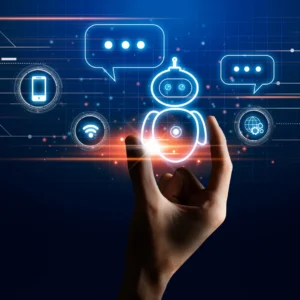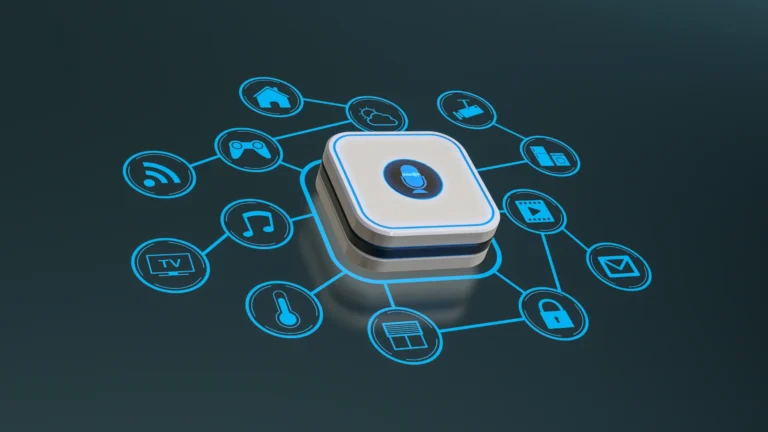
Virtual Assistants – Transforming How We Work and Live
Virtual assistants powered by artificial intelligence are no longer just a novelty – they are rapidly becoming integrated into our daily work and home lives in transformative ways. From automated scheduling to data analysis to personal task management, these AI-driven digital helpers are making us more productive, efficient, and effective across all domains.
The Rise of Virtual Assistants
Virtual assistants are software programs that can understand and respond to human voice commands and queries. The core technology driving modern virtual assistants is natural language processing (NLP), which allows the AI system to interpret human speech and text in order to understand the intended meaning behind the words.
The First Consumer Virtual Assistants
The first widespread consumer virtual assistant was Apple’s Siri, released in 2011. While limited in capability at first, Siri demonstrated the potential for users to control devices and access information hands-free via voice commands. Virtual assistants quickly proliferated to other platforms like Microsoft’s Cortana, Amazon’s Alexa, and Google’s Assistant.
Rapid AI Advancement Enhances Virtual Assistants
As NLP capabilities have advanced through machine learning, virtual assistants have rapidly evolved to become increasingly intelligent and useful across a wide range of applications. Improved speech recognition, dialog management, and task completion allows virtual assistants to engage in back-and-forth conversations, understand context and intent, and take direct action.
Virtual Assistants Transforming Productivity
Boosting Workplace Productivity
One of the biggest impacts of virtual assistants is on personal and workplace productivity. By handling routine tasks and queries via voice, virtual assistants allow humans to operate in a heads-up, hands-free mode rather than constantly shifting focus between digital devices.
Streamlining Workflows and Task Management
Virtual assistants excel at streamlining workflows through scheduling, note taking, reminders, and task management. A simple voice request like “Schedule a team meeting for next Thursday at 2pm” can kick off a chain of actions – checking team calendar availability, sending out meeting invites with dial-in details, and creating a meeting notes document to collaboratively capture discussion items.
Personal Productivity Companions
For individual knowledge workers, virtual assistants act as personal productivity companions. Assistants can read back important emails, create to-do lists, set reminders, and even draft responses hands-free while the person is moving between meetings or traveling.
Rapid Data Access and Insights
The data access and querying capabilities of virtual assistants driven by advances in NLP and knowledge retrieval allow for lightning-fast research and insights not possible through manual search alone. A marketing manager could ask their virtual assistant “What were our top social media campaigns for engagement last quarter?” and receive specific metrics and takeaways pulled from dispersed data sources.
Home Productivity and Task Offloading
Virtual assistants are also game-changers for boosting personal productivity through time savings and task offloading in the home setting. Users can create grocery lists, set reminders for appointments, control smart home devices, and have the assistant handle other routine tasks – all via voice. This frees up time and reduces the cognitive load of juggling many small to-dos.

The Next Evolution – Personalized AI Assistants
Learning From Personal Data
While virtual assistants like Alexa and Siri were generalist tools accessible to all, personalized AI assistants that can be customized and trained on an individual’s habits, preferences, and data are an emerging trend.These assistants combine general language models with the ability to ingest and learn from a person’s data corpus like emails, calendar, documents, and notes to exponentially increase their utility for that specific user over time. By observing how the individual works and communicates, the assistant can automate more complex workflows and tailor its personality to that user’s style.
Tailored for Executives and Knowledge Workers – For example, a busy executive could leverage their personalized virtual assistant to not only schedule meetings and take notes, but to review, summarize, and provide recommendations for an upcoming strategy presentation based on analyzing the content and the executive’s previous feedback. The time savings and seamless support could be game-changing.
Enterprise Virtual Assistants for Company Operations – Virtual assistants personalized and trained on a company’s operations and data open up immense possibilities for enterprise productivity as well. Rather than each knowledge worker having to adapt to a general assistant, companies could offload entire workflows and business processes to a virtual assistant customized for their unique needs.

Virtual Assistants Extending Human Capabilities
Accelerating Written Content Creation Beyond automating routine tasks, virtual assistants are augmenting and extending human capabilities in powerful ways never before possible at such an ambient, conversational level. Writing is one key area where virtual assistants shine. By leveraging large language models trained on vast textual data, assistants can generate fluent written content from simple prompts or outlines provided via voice or text. The generated output can be iteratively refined through a conversational process with the human.
Whether it’s drafting emails, long-form documents, website copy, essays, or anything else – the virtual assistant can dramatically accelerate written throughput while allowing the human to focus on higher-level strategic framing versus manually producing all of the words themselves.
Enhancing Data Analysis and Insights
Data analysis represents another fruitful application domain. Virtual assistants can ingest and make sense of large, messy datasets structured or unstructured containing text, numbers, and visualizations. A researcher could upload research papers and ask the assistant to “Summarize the key findings and trends” to quickly extract insights. Or a business analyst could connect the assistant to operational data sources and query for “revenue breakdown by product and region over the past 6 quarters” to receive a spoken summary plus visual charts displayed for easy comprehension and further analysis.
Multimodal AI for Immersive Experiences
Virtual assistants also enable newfound capabilities through multimodal interaction – combining voice, text, visuals, and other modalities seamlessly. Rather than being confined to a screen or visual display, assistants can overlay digital information directly onto a user’s field of vision through augmented reality (AR) or present it audibly. For example, a field technician working on complex equipment could use an AR headset to communicate with a virtual assistant that provides overlays with instructional visuals and voice guidance synced to what the technician is viewing and doing in their physical environment – immensely increasing comprehension and accuracy compared to shuffling through paper manuals or looking back and forth at a screen.
Unique use cases for virtual assistants
Environmental Monitoring and Conservation
Virtual assistants can be deployed to monitor environmental conditions, gather data on air quality, water levels, biodiversity, and weather patterns. They can analyze this data in real-time, providing alerts for anomalies or changes that require immediate attention. Virtual assistants can also assist environmental researchers by automating data collection processes, generating reports, and recommending conservation strategies based on the analyzed data. By leveraging AI and machine learning, these assistants contribute to proactive environmental management and conservation efforts globally.
Personalized Career Development
Virtual assistants can assist professionals in career development by analyzing their skills, experience, and career goals. They can suggest relevant training courses, certifications, and networking opportunities. Virtual assistants can also provide insights into industry trends, job market demands, and personalized career growth strategies.
Crisis Management and Disaster Response
Virtual assistants can play a critical role in crisis management and disaster response scenarios. They can disseminate emergency alerts, provide real-time updates on evacuation routes and shelter locations, and offer guidance on safety protocols. Virtual assistants can also coordinate resources, such as deploying rescue teams or managing relief supplies, based on situational needs.
Smart Agriculture and Farm Management
In agriculture, virtual assistants can help farmers optimize crop management through data-driven insights. They can monitor soil moisture levels, weather forecasts, and pest infestations. Virtual assistants can recommend optimal planting and harvesting times, suggest irrigation schedules, and even automate farm equipment based on environmental conditions and crop growth stages.
Personalized Mental Health Support
Virtual assistants can provide personalized mental health support by offering coping strategies, mindfulness exercises, and relaxation techniques. They can monitor mood patterns and detect signs of distress, offering timely interventions or connecting individuals with mental health professionals when necessary. Virtual assistants can maintain privacy and confidentiality while providing ongoing support and resources.
Space Exploration and Astronaut Assistance
Virtual assistants can assist astronauts and space mission crews in space exploration endeavors. They can provide guidance on spacecraft operations, monitor life support systems, and assist with scientific experiments. Virtual assistants can also analyze data collected during space missions, aiding in discoveries and optimizing mission objectives. Their ability to operate autonomously in remote and extreme environments makes them invaluable assets in space exploration.
Real-World Applications: Virtual Assistants Solving Diverse Challenges
Healthcare Efficiency
Virtual assistants like IBM Watson Health have been used to streamline medical diagnosis and treatment planning. They analyze patient data, suggest treatment options based on medical literature, and provide physicians with real-time insights, improving accuracy and reducing diagnosis time.
Customer Service Optimization
Companies like Lufthansa and KLM Royal Dutch Airlines use virtual assistants to handle customer inquiries and provide personalized assistance. These assistants can answer common questions, help with booking flights, manage reservations, and even resolve issues such as flight cancellations, enhancing customer satisfaction and operational efficiency.
Financial Management
Virtual assistants such as Erica by Bank of America help users manage their finances more effectively. They provide insights into spending patterns, offer budgeting advice, and facilitate tasks like bill payments and fund transfers. This simplifies financial planning and empowers users to make informed decisions about their money.
Educational Support
Virtual assistants like Duolingo utilize AI to provide language learning support. They offer personalized lessons, practice exercises, and feedback based on individual learning progress. These assistants help learners overcome language barriers and improve proficiency at their own pace.
Accessibility Enhancement
Virtual assistants such as Microsoft’s Seeing AI are designed to assist visually impaired individuals. They can read aloud text, identify objects, recognize faces, and describe scenes in real-time using the device’s camera. This technology enhances accessibility and independence for people with disabilities.
Smart Home Integration
Virtual assistants like Amazon Alexa and Google Assistant control smart home devices, such as thermostats, lights, and security systems. They enable voice-activated commands for tasks like adjusting room temperature, turning on lights, and locking doors, enhancing convenience and home security.
Enterprise Productivity
Virtual assistants like x.ai and Clara automate scheduling tasks for businesses. They manage calendars, schedule meetings, and coordinate availability among participants. These assistants save time for employees, reduce scheduling conflicts, and improve overall organizational efficiency.

The Future of Ambient AI Assistants
Government Initiatives
The evolution of virtual assistant capabilities is poised to accelerate dramatically in the coming years, driven by ambitious plans from governments, tech giants, and innovative companies alike. Governments are increasingly recognizing the potential of virtual assistants in enhancing public services and administrative efficiency. For instance, initiatives are underway to integrate AI-powered assistants into public healthcare systems to streamline patient interactions and improve healthcare delivery. Governments are also exploring virtual assistants for citizen engagement, enabling easier access to information and services.
Corporate Investment
On the corporate front, major tech companies are investing heavily in advancing virtual assistant technologies. Companies like Google, Amazon, and Microsoft are focusing on enhancing the natural language understanding and conversational abilities of their assistants. Future iterations aim to enable assistants to handle more complex tasks autonomously, such as predictive analytics, personalized recommendations, and proactive problem-solving.
Healthcare Innovation
In the healthcare sector, virtual assistants are anticipated to play a pivotal role in personalized medicine, leveraging AI to analyze vast datasets and provide tailored treatment plans based on individual patient histories and genetic profiles. Pharmaceutical companies are exploring virtual assistants to accelerate drug discovery processes, predict drug interactions, and optimize clinical trials.
Smart City Integration
Furthermore, virtual assistants are expected to become integral in smart city initiatives, assisting in urban planning, traffic management, and emergency response systems. By leveraging real-time data and predictive analytics, these assistants can contribute to more efficient resource allocation and improved public safety.
Education Transformation
In education, virtual assistants are poised to revolutionize learning experiences by providing personalized tutoring, adaptive learning paths, and real-time feedback to students. Educational institutions are exploring virtual assistants to assist teachers in classroom management, grading, and curriculum development, thereby enhancing educational outcomes and accessibility.
Overall, as virtual assistants continue to evolve and integrate deeper into everyday life, the future holds promise for transformative applications across various sectors, driving innovation, efficiency, and enhanced human-machine collaboration on a global scale.
Impacts and Considerations
Benefits and Concerns
The rise of ambient, intelligent virtual assistants embedded across work and home environments represents one of the most transformative applications of AI in our era. While the productivity, efficiency, and capability gains could be immense, there are also important considerations around privacy, security, data governance, and ethical AI development that require close examination.
Privacy and Data Security
Privacy and data security are paramount as virtual assistants become privy to our personal and professional information through their integrations across apps, inboxes, files, and more. There need to be clear opt-in controls for what data is ingested, along with robust data encryption and access policies.
AI Ethics and Governance
There are also ethical considerations on AI assistants’ potential to manipulate, spread misinformation, or exhibit harmful biases in their outputs that could be amplified given their increasing pervasiveness. We must hold the companies developing virtual assistants accountable for building in strong safeguards and objective truth measures.
Workforce Impacts
The integration of virtual assistants raises concerns about their impact on the workforce. As these assistants automate certain tasks traditionally performed by humans, there is potential for job displacement in those areas. However, concurrently, there is a growing demand for roles that support the development, maintenance, and enhancement of AI systems. These include positions in customer service, data analytics, and technical support, where human oversight and specialized expertise are essential for optimizing and leveraging the capabilities of virtual assistants effectively. Thus, while some jobs may be automated, new opportunities emerge in fields crucial to advancing AI technology and integrating it into various sectors.
Preparing for the Virtual Assistant Era
As we navigate the integration of virtual assistants into our work and daily lives, it’s crucial to address the multifaceted challenges of privacy, security, ethical AI development, and workforce impacts. These issues demand rigorous examination, proactive governance, and thoughtful debate. By responsibly harnessing the potential of virtual assistants, we can ensure they enhance human capabilities, foster creativity, and maximize potential in this era of human-AI collaboration.
This approach not only safeguards against potential risks but also positions us to leverage AI technology to its fullest extent, driving innovation and improving the way we live and work.
Closing: Embracing the Promise of Virtual Assistants
As virtual assistants continue to redefine our interactions with technology, they herald a future where AI seamlessly integrates into our daily lives, enhancing productivity and fostering innovation across sectors. Yet, alongside these advancements, critical considerations around privacy, ethics, and workforce dynamics must be addressed with foresight and responsibility.
By navigating these challenges thoughtfully, we can harness the full potential of virtual assistants to empower individuals and organizations alike. This era of human-AI collaboration promises not only increased efficiency but also new opportunities for creativity and growth in a digitally connected world.
Looking forward, proactive governance and ethical deployment will be essential in shaping a future where AI enriches our capabilities while safeguarding our values and security. Together, let’s embrace this transformative journey, ensuring that virtual assistants contribute positively to our collective advancement and well-being.
Recent Blogs
Unleashing the i7 Processor Power with Holoware
Choosing the Perfect IPS Screen Laptop by Holoware
Holoware - Choosing a Laptop with Dedicated Graphics Card
Holoware's Best Budget Laptop for Programming
i9 Processor Laptops: Power & Performance at Holoware
The Rise of Thin and Light Laptops at Holoware
Holoware: Why a 4GB Graphics Card for PC Is Essential
8GB DDR4 RAM for Laptop: Boost Performance with Holoware
Holoware's Latest Generation of Laptop
AI Indian Laptop: Holoware Sets a New Standard for Indian AI PCs
About Holoware
Products & Services
Useful Links
©2024 Holoware® Computers Pvt. Ltd. | Site Map | Privacy Policy | Terms & Condition





Location: Porur,Chennai
No of Openings: 1
Join our team as a Senior Accounts Executive, where you’ll manage client relationships and implement innovative financial strategies. Your expertise in analyzing account performance will drive growth and foster lasting partnerships. If you’re ready to make an impact, we want to hear from you.
Roles and Responsibilities:
- Daily Accounts Receivable Management: Execute daily credit accounting in Tally Prime to ensure accurate financial records.
- Accounts Receivable and Credit Control Management: Administer the accounts receivable process and implement credit control measures to optimize cash flow.
- Invoice Processing and Material Transfers: Handle invoice cancellations and efficiently oversee the transfer of materials to the warehouse.
- Sales Returns and Order Cancellations Management: Process sales returns, record entries, create Post Goods Issues (PGI), and reverse canceled orders for precise sales tracking.
- Dealer Loan Recovery Supervision: Manage the recovery of dealer loans, accurately reflecting these amounts as recoverable income.
- Dealer Debit Data Reporting: Upload monthly dealer debit information to Power BI through Microsoft Azure for accurate financial analysis.
- Bank Reconciliation Tasks: Conduct detailed bank reconciliations to ensure transaction accuracy and resolve any discrepancies.
- Customer Account Reconciliation: Reconcile customer accounts with the General Ledger (GL) to ensure data consistency and accuracy.
- General Ledger Review: Perform monthly reviews of GL accounts to ensure compliance and accuracy in financial reporting.
- Monthly Sales Report Preparation: Compile and present monthly sales flash reports, offering insights into sales performance and trends.
- Monthly Financial Closing Procedures: Manage the monthly closing process, finalizing financial statements and recording all transactions.
- Tax Compliance Management: Prepare and submit Tax Deducted at Source (TDS) returns and issue Form 16 and Form 16A for compliance purposes.
- Employee Payroll Administration: Oversee the timely and accurate processing of employee salaries in line with payroll policies.
- Project Bills and Payment Oversight: Oversee the management of project bills payable, ensuring timely processing of payments to vendors and contractors.
- Project Budget Allocation Management: Allocate project budgets according to expense categories, ensuring effective financial resource utilization.
- GST Compliance Oversight: Manage Goods and Services Tax (GST) returns and TDS calculations to ensure accurate reporting and compliance.
- Audit Coordination: Collaborate with internal and external auditors, providing all necessary documentation for smooth audit processes.
- Audit Process Coordination: Facilitate internal and Auditor General (AG) audits by preparing all necessary documentation for review.
- Government Fund Allocation Liaison: Work with government agencies to coordinate fund allocations, ensuring compliance with regulations.
- Monthly Management Information Reporting: Prepare and present detailed Monthly Management Information System (MIS) reports to senior management.
Key Skills:
- Accounting
- Financial Reporting
- Tally Prime
- Data Analysis
- Reconciliation
- Tax Compliance
- Negotiation
- Problem-Solving
- Time Management
- Team Collaboration
- Vendor Management
Location: Porur,Chennai
No of Openings: 4
Join our team as a Senior Hardware Engineer to design and optimize state-of-the-art computing systems. You’ll leverage your expertise to innovate hardware solutions, ensuring peak performance and reliability in our products. Collaborate with a talented team to tackle complex challenges and help shape the future of technology.
Roles & Responsibilities:
- Lead the assembly process of desktops, laptops, and servers ensuring adherence to technical specifications and quality standards.
- Supervise and train a team of assembly technicians and junior engineers, providing guidance and feedback.
- Collaborate with the R&D and design teams to implement manufacturing processes for new products.
- Develop and optimize workflow to increase efficiency and reduce assembly times and costs.
- Maintain detailed documentation of assembly procedures and product modifications.
- Conduct quality control checks and troubleshoot hardware issues before final product release.
- Ensure compliance with safety standards and regulations in the assembly line.
- Manage inventory of parts and tools required for assembly processes.
- Stay updated with industry trends, new technology, and best practices in hardware assembly.
Preferred candidate profile:
- Bachelor’s degree in Electrical Engineering, Mechanical Engineering, or a related field.
- Minimum of 5 years of experience in hardware assembly, preferably focusing on PCs, laptops, and servers.
- The maximum age limit is 42 years
- Proven track record of leading a team in a manufacturing or assembly environment.
- Strong technical skills with a deep understanding of computer hardware components and assembly techniques.
- Excellent problem-solving skills and attention to detail.
- Proficient in using assembly tools and equipment.
- Certifications related to hardware assembly or project management.
- Experience in an ISO-certified or other regulated environment.
Key Skills:
- Service Engineering
- Hardware Networking
- Computer Hardware
- Team Leading
- Chip Level Repairing
- After Sales – Service and Support
- Computer Assembling
Location: Porur,Chennai
No of Openings: 2
Seeking a Senior Executive – International Purchase to spearhead global procurement strategies and secure top-tier suppliers. Harness your expertise to drive cost efficiencies, negotiate high-impact deals, and ensure seamless cross-border operations. Ideal candidates excel in strategic sourcing and thrive in a dynamic, fast-paced environment. Elevate our international purchasing with your strategic vision and industry insight.
Roles and Responsibilities:
- Develop and implement procurement strategies that are cost-effective and aligned with the company’s production needs and budget constraints.
- Identify, evaluate, and select reliable vendors and suppliers. Negotiate contracts and terms of agreements to achieve favourable pricing and delivery terms.
- Maintain optimal levels of inventory to ensure uninterrupted production schedules while minimizing carrying costs and obsolescence.
- Ensure that all purchased items meet quality standards and specifications required by the production process.
- Monitor and control procurement budgets and expenditures. Implement cost-saving initiatives without compromising on quality or reliability.
- Coordinate with production planning and logistics teams to ensure timely availability of materials and components.
- Stay updated with regulatory requirements and ensure procurement activities comply with legal standards and company policies.
- Identify potential risks in the supply chain and develop mitigation strategies to avoid disruptions in production.
- Analyse procurement data and market trends to make informed decisions and optimize purchasing strategies.
- Build and maintain strong relationships with vendors, suppliers, and internal stakeholders to foster collaboration and achieve mutual goals.
Preferred Candidate Profile:
- Proven experience as a Purchase or in a similar role.
- Should have a strong International Procurement experience.
- Strong negotiation skills and the ability to build long-term relationships with suppliers.
- Excellent communication and interpersonal skills.
- Familiarity with supply chain processes and inventory management.
- Bachelors degree in Business Administration, Supply Chain Management, or relevant field.
Location: Porur,Chennai
No of Openings: 2
Dynamic Logistics Executive sought to streamline supply chain operations and optimize distribution networks. Leverage your expertise to drive efficiency, enhance customer satisfaction, and lead innovative solutions. Ideal candidates are proactive problem-solvers with a knack for strategic planning and team leadership. Join us to make a tangible impact in a fast-paced environment!
Roles and Responsibilities:
Imports:
- Receiving the documents from overseas Agents.
- Documents are forwarded to various Liner for IGM filing purposes.
- Follow up on the vessel status for all import shipments through online.
- Providing the vessel details and the IGM number to the consignee once their shipment arrives.
- Issuing the Delivery order to a variety of consignees.
- Regular communication with All Liners/Consignee & Overseas Agent for all Import Shipments.
- As per the Shipper Invoice & Packing List, have prepared the shipment checklist.
- Preparing the necessary documents for clearance purposes
- Regular interaction with Liner for all the shipments.
- BE filing follow-up with CHA and transport movement
- Follow up on the status of all the shipments and inform the same to the respective shipper
- Preparing the Invoices of Various parties.
- Planning for day-to-day clearance on a priority basis.
Exports:
- Booking the cargo for all export shipments to Liner / Consolidator.
- Arranging the Container Release order from the liner and forwarding to the Shipper or CHA
- Informing liner to post the form-13 to CHA ID
- Follow up the container to load on the booking vessel.
- Preparing the Bill of Lading through on-line to various sector
- Based on the Liner invoice, have generated our Invoice for Customers.
- Issuing the Bill of Lading/COO/SCOMET
- Co-ordinating with all Overseas agents/Liner / Shipper/CHA for all export shipments.
- Scrutiny the Freight rates from the Liner / Consolidator and provide the best rate to the shipper).
- SB filing follow-up with CHA and transport movement
Preferred Candidates Profile:
- Tally /SAP/ERP knowledge required.
- Should be strong in Shipping INCOTERMS
- Preparing the Profit & Loss for all shipments (Import & Export)
Location: Bangalore, Hyderabad & Mumbai
No of Openings: 5
We are seeking a Key Account Manager for Corporate Sales who plays a crucial role in driving revenue growth, maintaining strong client relationships, and ensuring customer satisfaction within key accounts. Their responsibilities require a blend of strategic thinking, interpersonal skills, and a deep understanding of both the client’s business and their own company’s offerings.
Preferred Candidate profile:
- Excellent communication, interpersonal and relationship-building skills
- Should have a strong experience in B2B sales.
- Ability to work both independently and collaboratively in a team setting.
- Keen analytical skills and a strategic mindset.
- Willingness to travel for business purposes.
- Proven track record in lead generation and communication
- Ability to work independently and collaboratively
- Experience in the IT hardware/ Technology industry is a plus
- Experience in handling the IT/ITES, Manufacturing, Engineering, Media, BFSI Enterprise accounts is a plus
- Knowledge of IT hardware products is a plus
- Languages: Local Regional language and English are a must; Tamil & Hindi will be an added advantage.
- Preferred experience is 5 to 12 years in the relevant field.
Roles & Responsibilities:
- Establishing and maintaining a strong rapport with the enterprise accounts and the Channel partners in the assigned territories.
- Develop and execute strategic plans to achieve sales targets and expand the company’s customer base within key accounts
- Responsible for selling Artificial Intelligence (AI) Laptops, PCs and other Business Laptop, Executive Laptop, Desktops & Workstations.
- Coordinate with internal teams to ensure contract specifications are met on schedule.
- Analyse market trends and competitor activities to adjust strategies accordingly.
- Create and present detailed reports and presentations for various stakeholders.
- Business Development, Meeting the customers F2F Daily.
- Getting new Logos, generating leads, and providing excellent customer service.
- Drive existing accounts and get new business through SI’s and Large partners.
Location: Porur,Chennai
Languages: Hindi, Kannada, Telugu, Malayalam
No of Openings: 5
We are seeking a motivated and detail-oriented Business Analyst to join our dynamic sales team. The Business Analyst will play a key role in supporting our sales representatives and ensuring smooth operations within the sales department. This position offers an exciting opportunity to contribute to the success of our sales initiatives and provide excellent customer service to our clients.
Roles and Responsibilities:
- Identify potential customers interested in laptops, desktops, and tablets.
- Reach out to these prospects via phone or email to introduce the products.
- Discuss with customers to determine their specific requirements and preferences.
- Recommend and demonstrate the laptops, desktops, and tablets that best fit their needs.
- Track and manage leads through the sales cycle using CRM tools.
- Negotiate terms and close sales for the desired devices.
- Maintain communication with clients to ensure their satisfaction and encourage repeat business.
- Provide updates on sales performance and progress towards targets.
- Coordinate with technical support and product teams to address any issues or questions.
- Prepare and manage quotes, orders, and other sales-related documentation.
Preferred Candidates Profile:
- A bachelor’s degree in business administration, marketing, or a related field is preferred.
- Hindi or other regional languages are preferred.
- Proven experience in a sales support or coordination role, preferably in the technology industry.
- Strong organizational skills with the ability to manage multiple tasks simultaneously and prioritize effectively.
- Excellent communication and interpersonal skills, with a customer-focused approach.
- Proficiency in Microsoft Office suite (Word, Excel, PowerPoint) and CRM software.
- Attention to detail and high accuracy in data entry and record-keeping.
- Ability to work independently and as part of a team in a fast-paced environment.
- Positive attitude, willingness to learn, and adaptability to changing priorities.
Perks and Benefits:
- Opportunity to work with cutting-edge technology and innovative products.
- Collaborative and supportive work environment.
- Career growth and development opportunities within a growing company.
- Make a meaningful impact by contributing to the success of our sales team and driving business growth.
Location: Bangalore & Kochi
No of Openings: 2
We are seeking a Government Sales Specialist with exceptional communication skills and a deep understanding of government operations and procurement processes. This role is ideal for individuals with a strong background in public administration or related fields, who are adept at strategic engagement and building a long-term governmental relationship.
Preferred Candidate profile:
- Proven track record in sales with a focus on government sector engagements.
- Able to manage the GeM (Govt e-Marketplace) portal and Govt tenders.
- Exceptional verbal and written communication skills.
- Strong experience working with CXOs & Procurement Managers.
- Should have a strong experience in stock & sell.
- Ability to work both independently and collaboratively in a team setting.
- Keen analytical skills and a strategic mindset.
- Willingness to travel for business purposes.
- Preferred experience is 5 to 12 years in the relevant field.
- Strong knowledge in handling the state & central government departments within the whole Kerala/Karnataka/Mumbai state.
Roles & Responsibilities:
- Develop and implement effective sales strategies tailored to government sectors.
- Navigate and comply with government procurement policies and regulations.
- Build and maintain robust relationships with key stakeholders within government entities.
- Responsible for selling Artificial Intelligence (AI) Laptops, PCs and other Business Laptop, Executive Laptop, Desktops & Workstations.
- Coordinate with internal teams to ensure contract specifications are met on schedule.
- Analyze market trends and competitor activities to adjust strategies accordingly.
- Create and present detailed reports and presentations for various stakeholders.
Location: Porur,Chennai
No of Openings: 5
As a Level 2 Customer Support Specialist, you will serve as the primary point of contact for customers requiring advanced technical support for desktop/laptop-related issues. You will troubleshoot, resolve, and escalate complex problems, providing exceptional customer service and ensuring customer satisfaction.
Roles and Responsibilities:
- Respond to customer inquiries via phone, email, or chat, resolving Level 2 technical issues related to desktop/laptop hardware, software, and peripherals.
- Troubleshoot and diagnose complex problems using advanced technical knowledge and tools.
- Provide timely and effective solutions, escalating issues to senior technicians or management when necessary.
- Document customer interactions, issues, and resolutions in our CRM system.
- Collaborate with internal teams (e.g., sales, technical) to resolve customer concerns and improve processes.
- Stay up-to-date with industry developments, new technologies, and company products/services.
- Meet or exceed customer satisfaction, first-call resolution, and other performance metrics.
Preferred Candidates Profile:
- 2+ years of experience in technical support, preferably in a desktop/laptop service company.
- Advanced knowledge of desktop/laptop hardware, software, and peripherals.
- Excellent problem-solving, analytical, and communication skills.
- Ability to work in a fast-paced environment, prioritizing tasks and managing time effectively.
- Strong customer service skills, with a focus on empathy and professionalism.





Sample Form
Rugged Laptop
Rugged Tablet
Tablets
Demo Available*
Inquire About Rental Options
Warranty Offers
- Extended Protection: Warranty offers cover repairs and replacements for hardware failures or defects, saving significant costs on expensive components.
- Professional Support: They provide access to authorized service centers and professional support, ensuring quality repairs with genuine parts.
Services with those steps are available
- Accidental Damage Coverage: Some warranties include coverage for accidental damage, such as drops or spills, providing extra protection beyond standard defects.
- Technical Support: Many warranties offer round-the-clock technical support to help with troubleshooting and resolving software or hardware issues.
- Data Recovery Services: In case of hardware failure, some warranty plans include data recovery services to help retrieve important files and documents.
Solution With 24/7 Support
- 24/7 Technical Support: Many warranty plans provide round-the-clock technical support to assist with troubleshooting and resolving software or hardware issues at any time.
- On-Site Repairs: Certain warranty plans offer on-site repair services, where technicians come to your location to fix issues, minimizing downtime.
- Loaner Devices: Some warranties provide loaner devices while your laptop is being repaired, ensuring you stay productive without interruption.
- Global Coverage: For frequent travelers, some warranty plans offer global coverage, ensuring you can get support and repairs no matter where you are
Get Started
Please enable JavaScript in your browser to complete this form. |


In 1994, Mr.Thangavel started Origin Information Technology (in partnership with Mr. Loganathan) to provide quality computer hardware sales and service. In the year 2022, the company name was changed to “Tinkas Industries Private Limited” to encompass its diversified activities. Mr. Thangavel feels that he can give back to his nation the growth it needs in many ways like providing employment opportunities to many, and doing CSR activities, etc. His goal is to make Tinkas a leader at the National and Internaltional levels.
Holoware CEO abut Tinkas CEO
“The CEO of Tinkas (Mr.Thangavel) is undeniably one of the most practical and resourceful individuals I’ve encountered in Tamil Nadu. His profound understanding of the industry coupled with his diverse business ventures truly exemplifies his wealth of knowledge. Partnering with Tinkas has been a delight, and we eagerly anticipate further growth and collaboration.”
Mr. Ketan Patel is an indomitable entrepreneur revolutionizing the landscape of electronic consumer products worldwide through an unparalleled ‘experiential journey.’ Leading Creative Newtech since 1992, he steered its growth from a Mumbai market trader to a distributor and Brand Licensee. As an alumnus of IIM-Bangalore, Mr Patel leads Creative Newtech with a focus on innovation and strategic leadership. Under his three-decade leadership, Creative Newtech has become India’s market leader, expanding globally across Hong Kong, the Middle East, and the SAARC region.”
Holoware CEO abut Creative Newtech CEO
“The CEO of Creative (Mr.Ketan Patel) is a highly knowledgeable leader, renowned for his expertise in distributorship. His intuitive knack for product selection and sales strategies, both in India and abroad, is impressive. Creative thrives as a powerhouse, fueled by its diverse team and collective expertise. We eagerly look forward to a promising future and further success in our collaboration with Creative.”


Inmac Computers Private Limited is a trailblazing name in the realm of IT services and solutions. With a remarkable inception in 1992 by visionary entrepreneurs Girish Babu and Asha Girish Babu, our company has consistently remained at the forefront of technological innovation, setting new standards for excellence in the industry.
Holoware CEO abut Inmac CEO
“Inmac’s CEO (Mr.Girish Babu) is one of the most humble and generous individuals I’ve ever had the pleasure of meeting. His leadership has been instrumental in steering his team to success, not just in Maharashtra but across various regions in India. Their financial stability over the years speaks volumes about his capabilities. It’s truly a delight to collaborate with someone of his caliber. I look forward to continued partnership with Inmac.”








